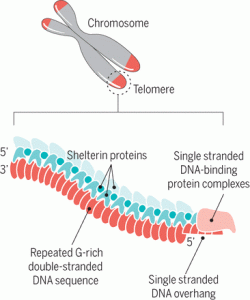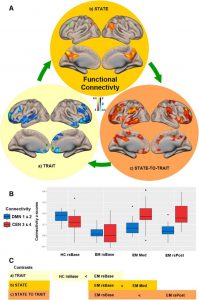Mindfulness Training Might Improve Need Satisfaction and Anxiety in Children with Learning Disabilities
By John M. de Castro, Ph.D.
“Mindfulness is a practice that can help children with LD manage stress and anxiety • Daily meditation gives children a relaxation tool they can call upon when stress levels rise.” – Marcia Eckerd
Learning disabilities are quite common, affecting an estimated 4.8% of children in the U.S. These disabilities present problems for the children in learning mathematics, reading and writing. These difficulties, in turn, affect performance in other academic disciplines. The presence of learning disabilities can have serious consequences for the psychological well-being of the children, including their self-esteem and social skills. In addition, anxiety, depression, and conduct disorders often accompany learning disabilities.
Mindfulness training has been shown to lower anxiety and depression and to improve self-esteem and social skills, and to improve conduct disorders. It has also been shown to improve attention, memory, and learning and increase success in school. So, it would make sense to explore the application of mindfulness training for the treatment of children with severe learning disabilities.
In today’s Research News article “Impact of a Mindfulness-Based Intervention on Basic Psychological Need Satisfaction and Internalized Symptoms in Elementary School Students With Severe Learning Disabilities: Results From a Randomized Cluster Trial.” (See summary below or view the full text of the study at: https://www.frontiersin.org/articles/10.3389/fpsyg.2019.02715/full?utm_source=F-AAE&utm_medium=EMLF&utm_campaign=MRK_1184693_69_Psycho_20191217_arts_A), Malboeuf-Hurtubise and colleagues recruited children with severe learning disabilities who were 9 to 12 years of age and attended a special education class. They received an 8-week training program that met once a week for 60 minutes. One group received mindfulness training, including body scan, walking, and breath meditations. The second group received social skills development training, including finding purpose in life, becoming responsible and engaged citizens, and developing a sense of belonging to the school and community. The children were measured before and after training and 3 months later for anxiety, depression, and need satisfaction, including autonomy, competence, and relatedness.
They found that in comparison to baseline both groups had significant improvements in competence and significant decreases in anxiety. There were no significant differences between the mindfulness and social skills groups. Because there wasn’t a no-treatment condition present it is not possible to discern if both conditions produced the observed improvements or that they were due to a contaminating factor such as participant of experimenter bias, Hawthorn effects, or simply time-based effects. But mindfulness training has been repeatedly found in highly controlled experiments to reduce anxiety. So, it is likely that the change observed in this study was due to the mindfulness training.
This is a very vulnerable group of children and improvements in emotions and feelings of competence are potentially very significant for the improvement of their lives. So, further research is warranted.
“mindful meditation decreases anxiety and detrimental self-focus, which, in turn, promotes social skills and academic success for students with learning disabilities.” – Kristine Burgess
CMCS – Center for Mindfulness and Contemplative Studies
This and other Contemplative Studies posts are also available on Google+ https://plus.google.com/106784388191201299496/posts and on Twitter @MindfulResearch
Study Summary
Malboeuf-Hurtubise C, Taylor G and Mageau GA (2019) Impact of a Mindfulness-Based Intervention on Basic Psychological Need Satisfaction and Internalized Symptoms in Elementary School Students With Severe Learning Disabilities: Results From a Randomized Cluster Trial. Front. Psychol. 10:2715. doi: 10.3389/fpsyg.2019.02715
Background: Mindfulness is hypothesized to lead to more realistic appraisals of the three basic psychological needs, which leads people to benefit from high levels of need satisfaction or helps them make the appropriate changes to improve need satisfaction. Mindfulness-based interventions (MBIs) have also shown promise to foster greater basic psychological need satisfaction in students with learning disabilities (LDs).
Objective: The goal of the present study was to evaluate the impact of a MBI on the satisfaction of the basic psychological needs and on internalized symptoms in students with severe LDs. A randomized cluster trial was implemented to compare the progression of need satisfaction, anxiety, and depression symptoms in participants pre- to post-intervention and at follow-up.
Method: Elementary school students with severe LDs (N = 23) in two special education classrooms took part in this study and were randomly attributed to either an experimental or an active control group.
Results: Mixed ANOVAs first showed that the experimental condition did not moderate change over time such that similar effects were observed in the experimental and active control groups. Looking at main effects of time on participants’ scores of autonomy, competence, and relatedness across time, we found a significant within-person effect for the competence need (p = 0.02). Post hoc analyses showed that for both groups, competence scores were significantly higher at post-intervention (p = 0.03) and at follow-up (p = 0.04), when compared to pre-intervention scores. A significant main effect was also found for anxiety levels over time (p = 0.008). Post hoc analyses showed that for both groups, scores were significantly lower at post-intervention (p = 0.01) and at follow-up (p = 0.006), when compared to pre-intervention scores.
Conclusion: Although the MBI seemed useful in increasing the basic psychological need of competence and decreasing anxiety symptoms in students with severe LDs, it was not more useful than the active control intervention that was used in this project. Future studies should verify that MBIs have an added value compared to other types of interventions that can be more easily implemented in school-based settings.









